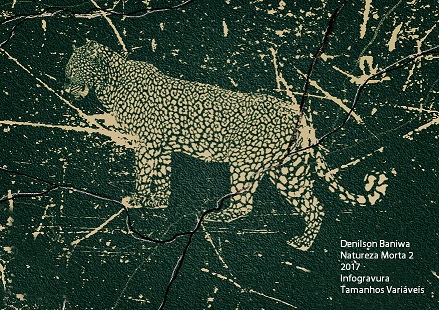Le storie degli animali nel Corano di Ahmad Bahgat: Quando gli animali prendono la parola
DOI:
https://doi.org/10.54103/2035-7680/16801Abstract
In Islam-inspired literature, tales of the lives of the Prophets have always highlighted the contribution of animals, though in a subordinate role compared to that of men. The anthology Qiṣaṣ al ḥayawān fil Qur’ān (Stories of Animals in the Quran) by Egyptian author and journalist Ahmad Bahgat stands as an exception. In its sixteen tales inspired by episodes in the Quran which showcase animals involved in wonders and miracles, the main characters are the animals themselves, who tell the Quranic tale like in a first-hand diary, in the first-person and from their own point of view. For the first time light is shed on their existence, without the overshadowing of those of the men with whom they have interacted. It is thus interesting to break down the representation of animals in these stories and grasp its originality. The first part of the essay will concern the author’s sources and how they impact the narrative while the second will focus on the choice of the animal as a means of circumventing the Islamic ban on the representation of the Prophets (Islam is notoriously an iconoclastic religion), achieved by superposing the animal on the Prophet, both in body and soul. The third part will examine the animal/virtue standing as the inverted double of the man/vice and, by consequence, the removal of bias concerning some animals in Arabic-Muslim culture.
Metrics
References
Bahgat, Ahmad. Qiṣaṣu al ḥayawān fil Qur’ān. Dar aš-šurūq, il Cairo, 1992.
Baudrillard, Jean, et al. “Modernité.” Encyclopædia Universalis, 2008, www.universalis.fr/encyclopedie/modernite/. Consultato il 15 sett. 2021.
Bœspflug, François. “Le Prophète de l’islam serait-il irreprésentable?” Revue des Sciences Religieuses, vol. 87, n. 2, 2013, Christianisme et islam, pp. 139-159, journals.openedition.org/rsr/1185. Consultato il 15 sett. 2021.
Canova, Giovanni. “Storia di Salomone e Bilqīs nella tradizione arabo-islamica.” La Regina di Saba. Un mito fra Oriente e Occidente. Atti del Seminario diretto da Riccardo Contini, Napoli, Università “L’Orientale” 19 novembre 2009 – 14 gennaio 2010, Archivio di Studi Ebraici, 2016, pp. 209-238, unora.unior.it/retrieve/handle/11574/173202/ 49067/Regina%20di%20Saba%20completo.pdf. Consultato il 15 sett. 2021.
Clermont-Ganneau, Charles. “El-Kahf et la caverne des sept dormants.” Comptes rendus des séances de l'Académie des Inscriptions et Belles-Lettres, vol. 43, n. 5, 1899, pp. 564-576.
Gazonneau, Aurore Anne-Marie. L’animal et l’islam à travers le temps. Ecole Nationale Vétérinaire d’Alfort, Thèse pour le doctorat vétérinaire, 2019, theses.vet-alfort.fr/telecharger.php?id=3467. Consultato il 15 sett. 2021.
Lory, Pierre. “Mystique musulmane.” Annuaire de l'École pratique des hautes études (EPHE), Section des sciences religieuses, vol. 120, 2013, journals.openedition.org/asr/1137. Consultato il 15 sett. 2021.
Neuve-Eglise, Amélie. “Les Sept Dormants d’Ephèse et les Ahl al-kahf,” Rencontres islamo-chrétiennes 1, La Revue de Teheran. Mensuel culturel iranien de langue française, vol. 28, 2008, www.teheran.ir/spip.php?article17#gsc.tab=0. Consultato il 15 sett. 2021.
Pennacchietti, Fabrizio Angelo. “La Reine de Saba, le pavé de cristal et le tronc flottant,” Arabica, vol. XLIX, n. 1, 2002, pp. 1-26, www.selefa.asso.fr/files
_pdf/AcLettre_01_D2_SABA.pdf. Consultato il 15 sett. 2021.
Renaudie, Pierre-Jean. “De quoi le zoocentrisme est-il le symptôme? Étude critique de l’ouvrage d’Étienne Bimbenet, Le complexe des trois singes. Essai sur l’animalité humaine.” Philosophiques, vol. 47, n. 2, 2020, pp. 493–502.
Robert, Marine. Construire le ”je” par le jeu: les récits à la première personne en classe. Education. 2012, dumas.ccsd.cnrs.fr/dumas-00781059. Consultato il 15 sett. 2021.
Zilio-Grandi, Ida. “Jonas, un prophète biblique dans l’islam,” Revue de l’histoire des religions, vol. 3, 2006, pp. 283-318.
---, “La figure de Caïn dans le Coran,” Revue de l'histoire des religions, vol. 216, n. 1, 1999, pp. 31-85.
Zouggar, Nadjet. “L’impeccabilité du prophète Muḥammad dans le credo sunnite. D’al-Ašʿarī (m. 324/935) à Ibn Taymiyya (m. 728/1328).” Bulletin d’études orientales, vol. LX, maggio 2012, pp. 73-89.
Downloads
Published
How to Cite
Issue
Section
License

This work is licensed under a Creative Commons Attribution-NonCommercial-NoDerivatives 3.0 Unported License.




